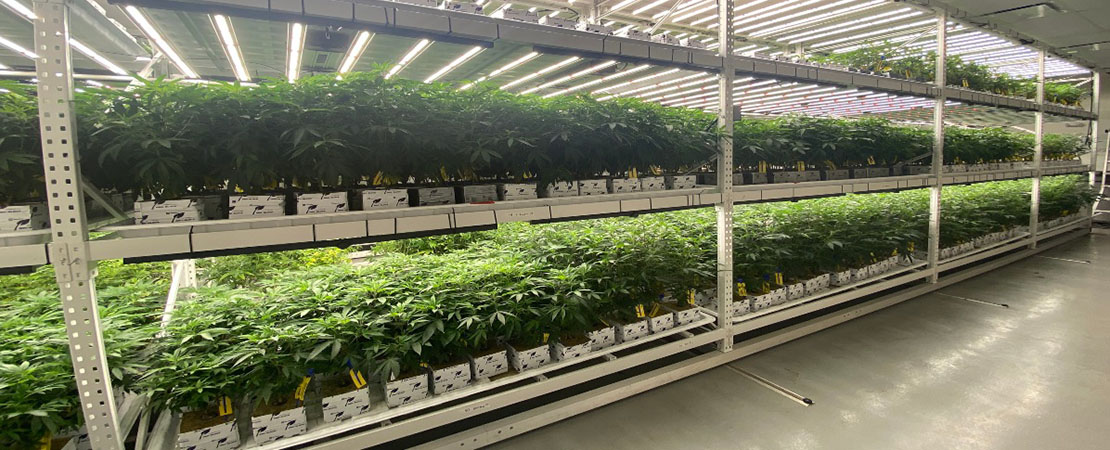Vertical Farming Investment: 3 High-Return Ways to Invest
As the world’s agricultural sector evolves, it brings up new investment opportunities. One worthy green investment making some major noise is vertical farming.
Vertical farming is a good green investment that is making a lot of noise lately. It’s a new type of cultivation that huge corporations like Softbank are investing in heavily.
One current agricultural trend is the loss of fertile land, which is expanding due to increased industrialization. Furthermore, the world’s population is increasing, posing a global food security problem.
Vertical farming is not only a profitable venture but also a social solution with the potential to impact the world. Vertical farming is a technological approach that aims to address all the above problems and more that plague the agricultural sector.
Therefore, investment in vertical farming is an opportunity to ensure food security for future generations while also making a profit.
All said and done, what is vertical farming?
What Is Vertical Farming?
Vertical farming, also known as CEA, is the growing of produce on stacked shelves within a controlled environment.
Vertical farming is a type of agriculture that may be carried out anywhere, regardless of land availability or weather conditions.
Vertical farming helps grow more crops like cannabis canopies on the same surface area.
In other words, vertical farming has been shown to increase yields on acreage by over 200 percent. For example, you can get 4-6 acres of produce from a single acre thanks to this technology.
Moreover, vertical farming doesn’t need to be done on arable land. In fact, it’s being done in urban centers. By utilizing Controlled Environment Agriculture technology (CEA), you can farm in warehouses, skyscrapers and even grow tents at home.
CEA technology uses LED lights, ventilation systems, vertical grow racks, and hydroponic systems to produce the ideal climate for growing crops indoors. You can grow your cannabis plants yearly with vertical farming, regardless of harsh weather.
As for vertical farming market share, venture capitalists have pumped over 900 million into vertical farming startups as of 2020. Moreover, there are over 2300 hydroponic farms in the US and several more companies like MMI Agriculture in the industry involved in vertical farming equipment solutions.
Why Invest in Vertical Farming?
Although vertical farming may appear to be a novel concept, it has been in existence behind closed doors, pun intended. It has only recently gained traction as a viable method of growing crops and reducing the threat of food insecurity.
Vertical farming investment is both a social and profitable venture. This reality has piqued the interest of various major companies, for example
- Softbank invested $200 million in Plenty
- Google ventures in 2018 invested $90 million in Bowery farming
- IKEA partnered to invest $40 million in Aerofarms.
These are vertical farming companies that grow crops and provide vertical farming systems solutions.
On the other hand, Companies are investing in vertical farming because:
- Vertical Farming Uses Less Water with up to 90% less than conventional cultivation methods.
- It Improves the Yield Quality – Vertical farming involves using fewer fertilizers and pesticides, resulting in high-quality foods.
- There Are Reduced Transportation Costs – Vertical farms are common in urban centers bringing food closer to consumers hence lowering carbon emissions.
- Reduces Food Waste – The food is near the consumer, fresh and better-tasting due to the controlled environment hence lowering the chances of food waste.
- Cultivation Is Year-Round – Growing in vertical farming systems indoors means you aren’t affected by weather conditions; hence can grow all year, anytime, regardless of the season.
Moreover, the vertical farming market is expected to grow by 25% year over year through 2027 to reach $31.6 billion by 2030.
How to Invest in Vertical Farming 
There aren’t many ways to invest in vertical farming as it’s still a relatively new industry.
However, individuals, investors, and big corporations are investing in existing farms, starting farms, and purchasing stocks and equity.
Big pharma, cannabis companies, and corporations are all interested in capitalizing on vertical farming as it becomes more popular.
The key to knowing the best vertical farming company to invest in is assessing;
- Who is already investing in the company
- What is their business model
- And what technology they are using
It’s important to note that vertical farming investment is a capital-intensive endeavor. However, as the market matures, there may be better investment opportunities.
So, what are your options for vertical farming investment?
1. Start a Vertical Farm
If you got a warehouse with access to amenities like water and electricity, what you need is vertical growing equipment like vertical grow racks or mobile carriages, lighting and a ventilation system. With this in place, you can get your vertical farming investment started.
The initial capital in vertical farming investment is high; hence you’ll need to get your calculations right.
Partnering with the right vertical systems installation company should be high on your priority list. Such companies can provide you with blueprints or sketches for your grow room, allowing you to maximize your grow space and avoid costly alterations in the future.
Installation companies also provide various vertical farming solutions like the mezzanine walkway that help improve ergonomics and worker efficiency.
Despite the high initial expenses, the system becomes more cost-effective over time, making it a worthwhile investment.
Alternatively, you can start a homemade vertical farm with tabletop caster units to get a feel for the business before going big.
2. Purchase Vertical Farming Stocks
A majority of vertical farming businesses have yet to go public to be listed on the stock exchange market.
However, there are some noteworthy vertical farming companies to look out for. Examples include:
- Aerofarms – The farm runs on aeroponics which reduces water usage by over 95%.
- Bowery Farming – It’s an Agritech company established in 2015 already selling its products in supermarkets like Foragers and Whole Foods.
- AppHarvest – It’s a developer and operator of vertical farms that has gone public and is listed on NASDAQ. It’s your best bet at investing in vertical farming stocks.
- Plenty – It’s a SanFrancisco based vertical farming company with the highest valuation yet of $226 million. It’s been backed by big names like Softbank and Bezos Expeditions.
Although many vertical farming businesses have yet to be listed on the stock exchange, a few registered vertical farming equipment and supplies manufacturers have. Vertical farming stock to consider include:
- GrowGeneration Corp
- Hydrofarm Holdings
- Agrify Corp
- Urban-gro Inc
- Village Farms International
Vertical farming has yet to show considerable promise in the stock market. Yes, the companies may have high valuations due to the high-level investors backing the vertical farming companies. However, it would be advisable to keep an eye on the trends before investing in vertical farming companies’ stocks.
Remember, it’s a budding industry; therefore, every year may bring new surprises, so be on the lookout.
3. Acquire Equity From Vertical Farming Companies
Even in the vertical farming field, startups are cropping up now and then. You can leverage this opportunity by purchasing equity.
Companies are coming up with novel solutions that could reshape the market not only in the United States but also in Europe.
Manufacturers and suppliers of vertical agricultural equipment and supplies have also shown potential. Investing in such businesses could pay off in the long run.
The best way to acquire equity is to be on the lookout for a fundraising round on crowdfunding platforms.
Notably, a vertical farming investment in equity demands a lot of cash, and hence you should weigh out your options
Is Vertical Farming Investment Lucrative?
What’s for sure is that most vertical farming companies have high valuations as a result of heavy investments from large corporations.
Whether this is a bubble or something noteworthy, time will tell. However, the technology is being adopted globally as a food security solution which gives confidence in the industry’s longevity.
At MMI Agriculture, we are invested in providing vertical farming solutions through the supply of vertical farming equipment and installation services.
We are an experienced installation provider equipping companies with high-quality uprights, providing efficiency and service.
Contact us for a quote today.

